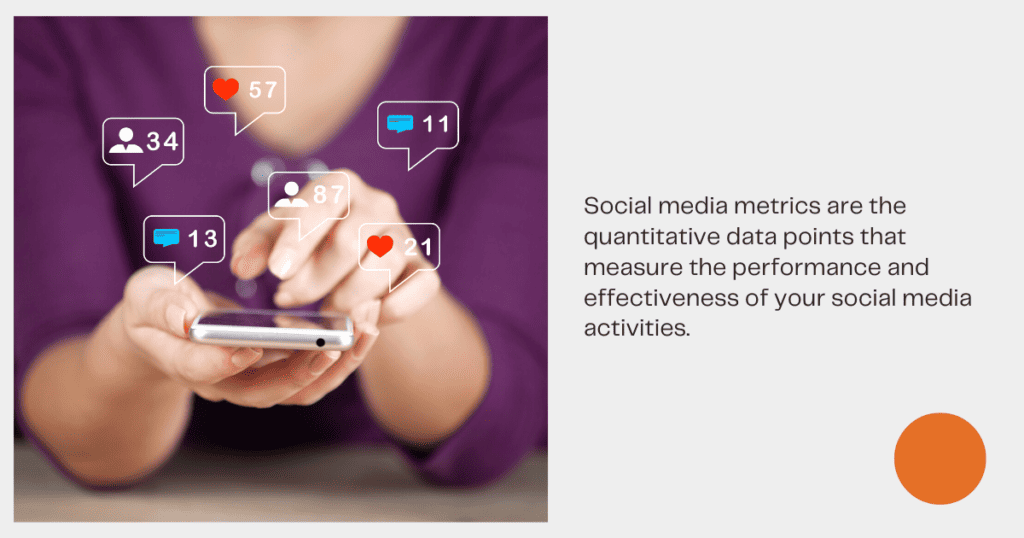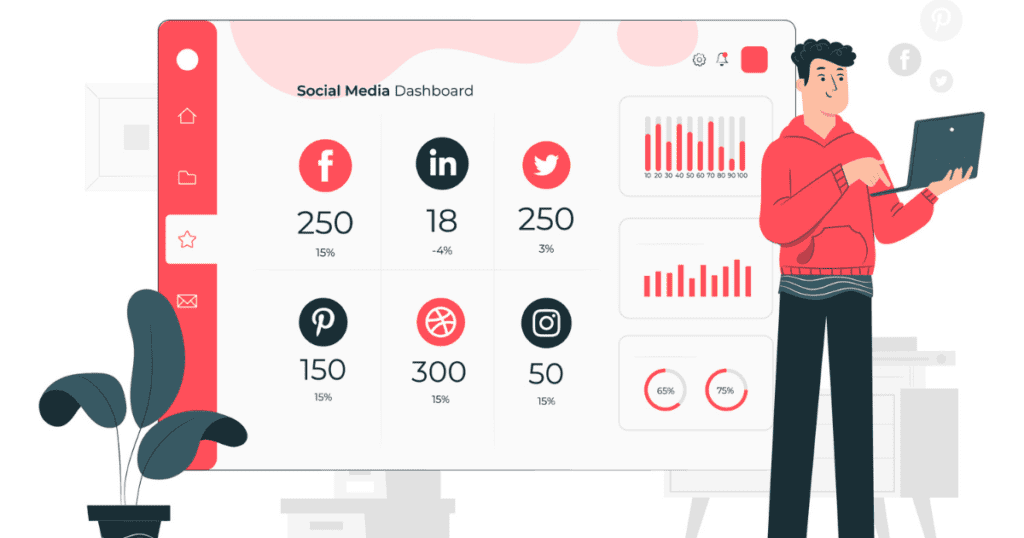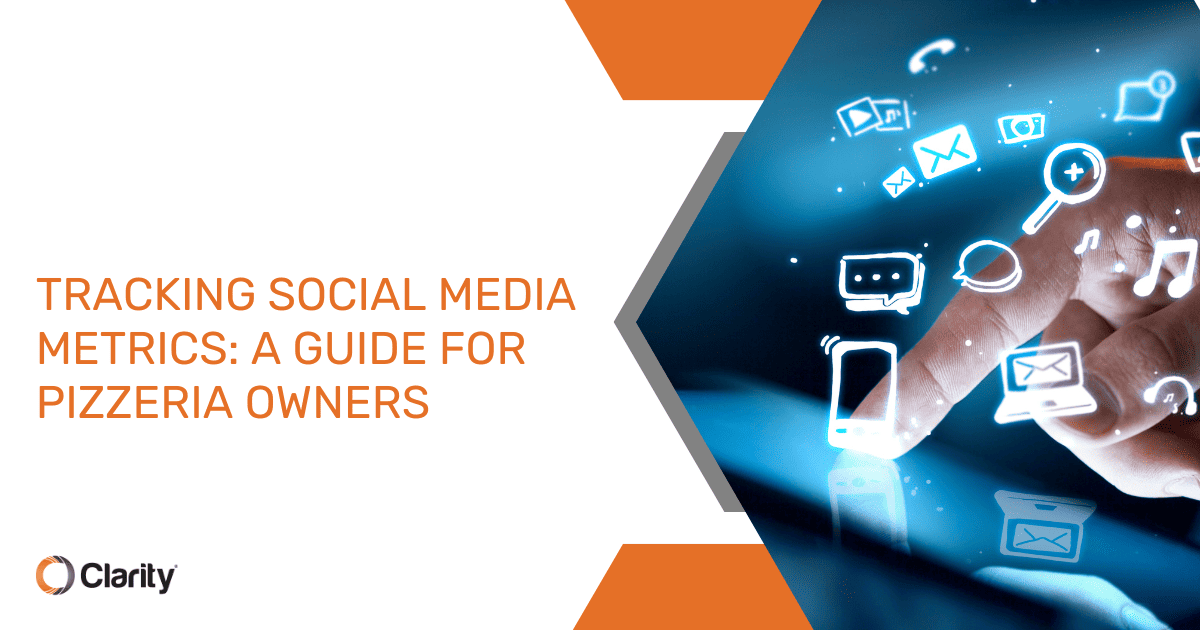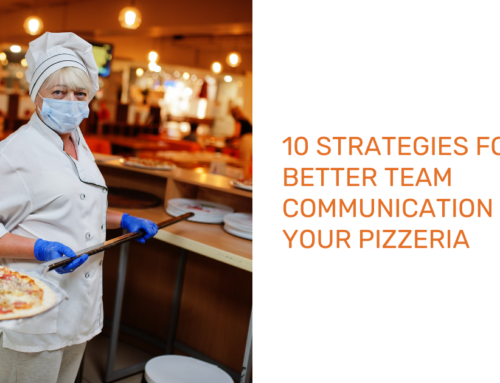Welcome back to our ongoing series on social media marketing for pizzerias and restaurants! So far, we’ve discussed why social media should be part of your strategy, the importance of choosing the right platforms, how to create engaging profiles, compelling content ideas, and tips on boosting engagement. But how do you know how well your social media marketing efforts are doing? By tracking social media metrics, of course!
Knowing the statistics behind your social media activities is not just about numbers; it’s about turning those numbers into meaningful insights. By understanding the metrics, you can refine your strategies and maximize your return on investment. We’ll explain how to do this today.
What Are Social Media Metrics?

Social media metrics are the quantitative data points that measure the performance and effectiveness of your social media activities. They go beyond the superficial counts of likes and comments and reveal the impact of your content, your audience’s behavior, and the overall efficacy of your social media strategy. Here’s the golden nugget: when appropriately analyzed, these metrics can inform and drive your future content and engagement strategies, enhancing your brand’s presence and success.
Let’s delve into some crucial metrics you should keep your eye on.
Engagement
Engagement refers to the interactions your audience has with your content. These interactions come in various forms, including likes, comments, shares, saves, and mentions.
Likes show a basic level of appreciation from your audience, while comments require more effort and signal deeper engagement. Meanwhile, shares and retweets demonstrate that users endorse your posts, and they can significantly extend your content’s reach.
By keeping an eye on each form of engagement, you can better understand your audience’s behavior and adjust your content strategy accordingly.
Engagement Rate

Arguably one of the most important social media metrics, engagement rate measures your audience’s interaction with your content. It includes actions such as likes, comments, shares, saves, mentions, and click-throughs. But instead of viewing these actions in isolation, engagement rate provides the percentage of interactions compared to your total followers (or the reach of a specific post).
High engagement rates often signify that your content resonates with your audience and sparks interaction. Understanding what type of content drives high engagement helps refine your strategy, so you can focus on creating and sharing more of what your audience loves.
Reach and Impressions
Reach and impressions are metrics that give you an idea of your content’s visibility. Reach refers to the unique number of users who have seen your post, while impressions count the total number of times your post was displayed, irrespective of clicks.
While these metrics might seem similar, they serve different purposes. High reach indicates that your content is getting in front of a large number of unique users, which is crucial for brand awareness. On the other hand, a high number of impressions can signal that your content is compelling enough to be viewed multiple times by the same users, which can help boost engagement.
Click-Through Rate (CTR)

The click-through rate (CTR) measures the percentage of users who click on a link in your post relative to the total number of users who viewed it. CTR is vital when your post directs followers to a specific action, like checking out a new menu item, making a reservation, or ordering online.
A high CTR indicates that your call-to-action is compelling and the accompanying content is appealing. If your CTR is lower than you’d like, consider revisiting your content strategy and adjusting your call-to-action.
Follower Growth Rate
Your follower growth rate provides insights into how quickly you gain new followers over a specific period. It offers a percentage increase in followers, giving you an idea of how effectively you attract new audience members.
Rapid growth can indicate that your content and engagement strategies are working, while a stagnant or declining rate may suggest a need for adjustments in your social media strategy. But just because you’re posting on social media does not automatically mean you’ll get tons of new followers. Check out this article to get strategies specifically for follower growth.
Tracking Social Media Metrics to Inform Strategy

Social media metrics are not just numbers; they’re vital signs that provide insights into your audience’s behavior and the effectiveness of your social media efforts. Let’s look at some ways these metrics can help shape your strategy.
Identifying Content Preferences
You can gauge which content resonates with your audience the most by tracking engagement metrics (likes, comments, shares) for different posts. Are your mouth-watering pizza photos garnering more likes? Do your behind-the-scenes videos receive more shares? This understanding can guide your content creation strategy, allowing you to produce more content your audience loves.
Finding the Right Time to Post
Reach metrics can help identify when your audience is most active online. By comparing the reach of posts published at different times or days of the week, you can determine the optimal times to post for maximum visibility.
Monitoring Promotional Success
Conversion metrics, such as click-through rates, provide insights into how well your promotional posts perform. If a post promoting a special offer has a high click-through rate, that’s a sign the promotion is appealing to your audience. Conversely, a low click-through rate might signal a need to revise your offer or adjust your call-to-action.
Understanding Audience Growth

By watching follower growth, you can understand if your brand is gaining popularity and reaching a larger audience over time. A steady increase in followers indicates that your overall strategy is working. A sudden spike might be tied to a specific campaign or viral post. In addition, many social media channels have analytics platforms that can tell you about the demographics of your new followers.
Evaluating Brand Sentiment
The tone of the comments on your posts can help gauge audience sentiment toward your brand. Positive comments indicate strong brand affinity, while a surge in negative comments may signal a problem that needs addressing. Also, monitoring the number of positive or negative mentions your brand receives on social media can help you understand public sentiment.
Refining Ad Strategies
If you’re running paid ads, metrics like cost-per-click (CPC) and return on ad spend (ROAS) are crucial to evaluate the cost-effectiveness of your campaigns. These insights can guide your ad spend decisions, helping you allocate your budget to the most effective campaigns.
Tips for Social Media Metrics

In addition to the advice about tracking social media metrics above, here are some general tips:
- Use Social Media Analytics Tools: Most social media platforms offer built-in analytics tools which provide a wealth of data about your posts and audience. Facebook Insights, Instagram Insights, Twitter Analytics, and LinkedIn Analytics are examples of such tools. For more advanced analysis, you might consider third-party tools like Hootsuite, Buffer, or Sprout Social.
- Set Clear Goals: Having clear objectives for your social media campaigns will help you identify which metrics are most important to track. If your goal is brand awareness, you might focus on reach and impressions. If it’s customer engagement, likes, comments, and shares will be more relevant.
- Benchmark Against Competitors: Looking at social media performance in isolation isn’t enough; you need to know where you stand in your industry. Identify your key competitors and benchmark your metrics against theirs to understand your relative performance.
- Monitor Regularly and Adjust Accordingly: Metrics tracking is not a one-time task. Monitoring your metrics over time allows you to observe trends and adjust your strategy.
Making Social Media Marketing Easier
Understanding social media metrics is a big part of mastering social media marketing. By tracking the numbers (and knowing how to interpret them), you can make data-driven decisions that maximize your marketing efforts and return on investment.
By now, in our series, you’ve likely realized that social media marketing is a lot more complex than simply making a post. If you wish it could be easier, you’re in luck! Next time, in the final article of this series, we’ll explore some of the best tools and tips to make your social media marketing more efficient. See you then!



